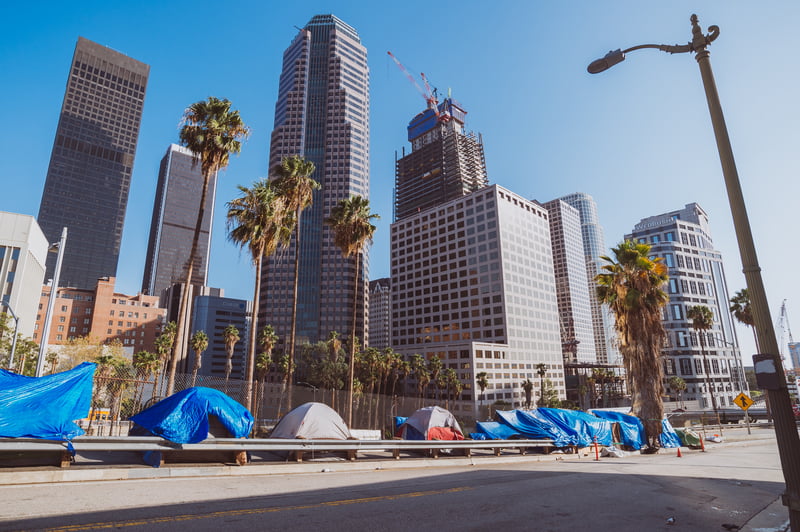Los Angeles has seen its homeless population rise by 12% in the past two years, to nearly 26,000 individuals living without housing in Los Angeles today. In Los Angeles County, the homeless population tops 44,000, according to the Los Angeles Homeless Services Agency. Most of these people aren’t living in shelters, but on the street, in tents, out in the open and under bridges. About 10% of homeless people in Los Angeles are veterans and many more have disabilities or illnesses.
The City of Los Angeles recently declared a state of emergency to address the growing homeless epidemic. To that end, they set aside $100 million to fix the problem. Details on how the funds will be spent have not yet been ironed out. However, city council members have suggested some of the funds be used to build and smooth the permitting process of affordable housing.
It’s important to note that while much of the homeless population has no housing due to long-term circumstances, like illness or disability (and often addiction), the 12% increase over the past two years is not due simply to an increase in the long-term homeless population. The unfortunate collision of low wages and high rents has forced many low-income workers onto the streets in the short-term, over the past two years.
That’s probably why Los Angeles Mayor Garcetti cited the city’s plan to increase the minimum wage to $15 per hour as one of his pillars to address the homeless emergency. Boosting wages may help families continue to make rent during the area’s rental squeeze, as the average housing cost in Los Angeles now eats up 47% of the average earner’s monthly income, the highest percentage in the state.
However, ensuring low wages will become slightly higher is kind of like treating a heart attack with Tylenol. It may help with the pain, but it does nothing to fix the root of the problem — in this case, the excess demand for rentals along with diminishing rental inventory.
Zone for rental stability
Only one housing unit was built for every four new individuals in Los Angeles County in 2014. As most new residents look first to rental housing rather than purchasing, rental vacancies are falling at an alarming rate in Los Angeles and across the state, causing rents to escalate.
Soaring rents are a big problem for would-be homebuyers, since they are unable to save up for down payments to purchase, as first tuesday has often reported. However, high rents have had a more immediate effect on those living on the bottom rungs of the income ladder; homeownership is the last thing on their radar. Forget saving, many have lost their shelter because they’re simply unable to keep up with rising rents on stagnating incomes.
This is heartbreaking for the individuals involved. It is also a scar on the communities affected.
To fully address the homeless problem in Los Angeles and surrounding cities, the government’s nebulous plan to increase the minimum wage, build more shelters and usher affordable housing permits through more quickly is lacking an essential amendment. The essence of the problem which needs to change is outdated, exclusivist zoning regulations.
Re:code LA, the brainchild of the Los Angeles Department of City Planning, is currently working on a plan to revamp the city’s obsolete zoning codes. However, it has stated its main purpose is to streamline zoning regulation, not to change it to suit the rising needs of residents. (Los Angeles residents can attend a meeting to give their input on zoning changes).
But change is needed — and quickly. More rental housing needs to be built to meet the demand of Los Angeles’ ever-rising population. This means taller, denser buildings.
The problem: taller and denser neighboring buildings are usually unpopular with current residents.
But consider the alternative: the homeless emergency Los Angeles currently experiences. Not only is this a human tragedy, but homelessness drags down neighborhood desirability, making it more difficult for real estate agents to sell property in those neighborhoods.
To read more on how less restrictive zoning can result in positive change for a community, and how to get involved, see: California’s zoning pioneers.













